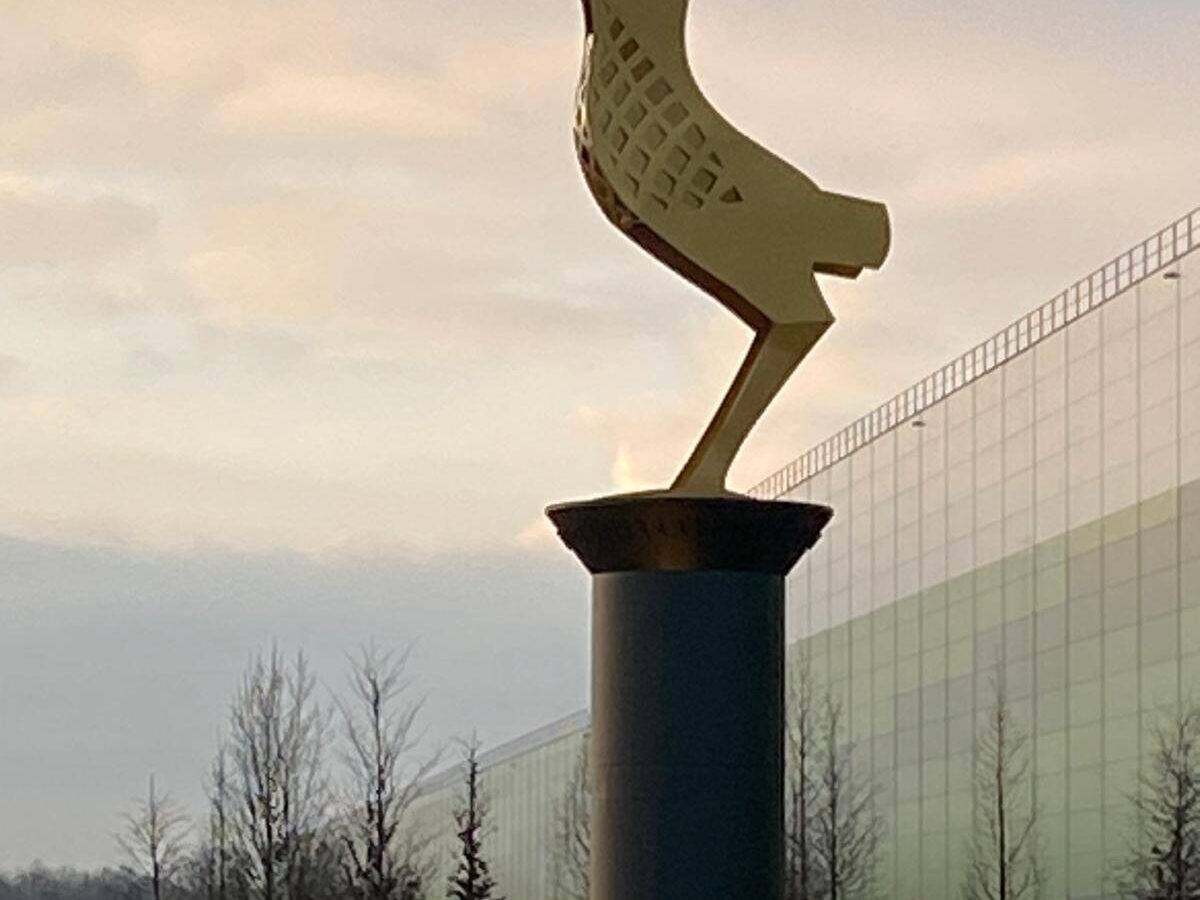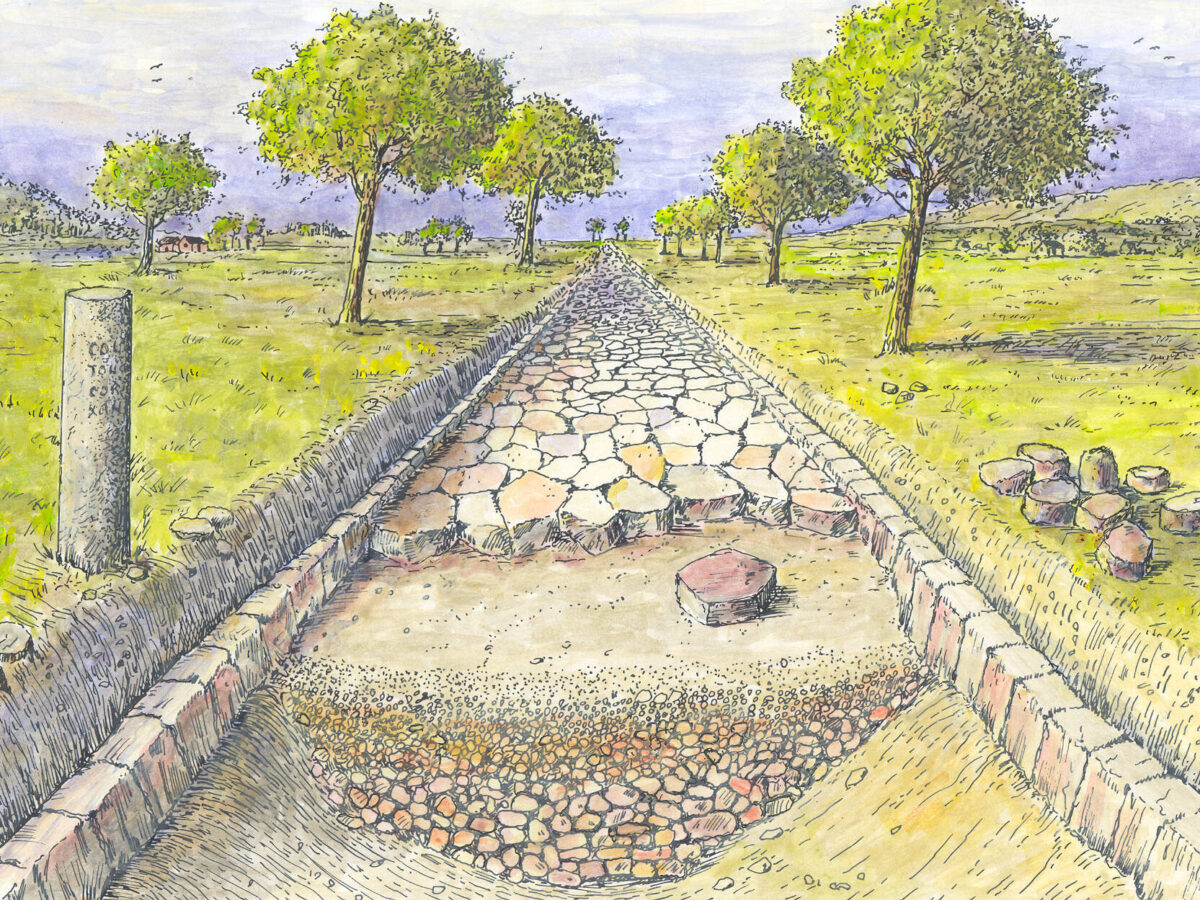The 1,900-Year Shadow of a Little Rooster
Author: Harry Lindelauf
Photography: Limburgs Museum, Vicky Maddow Wiki Commons, Anja Neskens
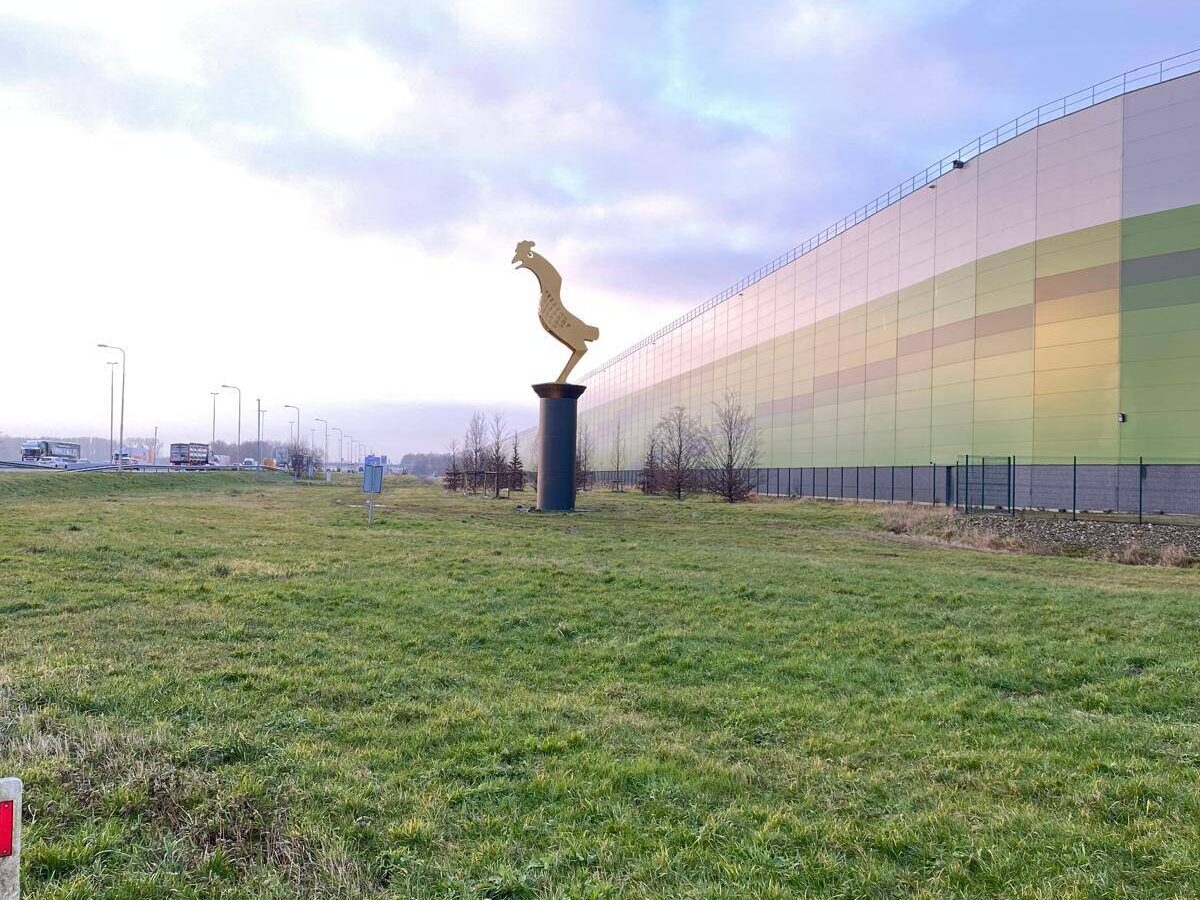
A small bronze statue, 1,900 years old, offers a fascinating interplay of similarities and differences. This is the story of a fine piece of craftsmanship by an unknown English bronze caster that, through a legionary, found its way to a Roman sanctuary. Meet the “Little Rooster of Buchten.”
Today, anyone driving along the A2 near Holtum-Noord cannot miss it: the 13-meter-high, sleekly stylized, gold-colored sculpture of a rooster. Slim, yet weighing 1,000 kilograms of aluminum. Artist Josée Fijnaut designed it as a contemporary translation of the original found during an excavation in 1976.
The new rooster carries two messages. The first: you are driving through the narrowest part of the Netherlands, where authorities improved infrastructure in what was called Operation Bottleneck. The second: you are driving through a region once inhabited, worked, and traversed by the Romans.
Photo: The rooster designed by Josée Fijnaut is illuminated from within in red, yellow, and blue — the colors of the enamel decoration of the original figurine.
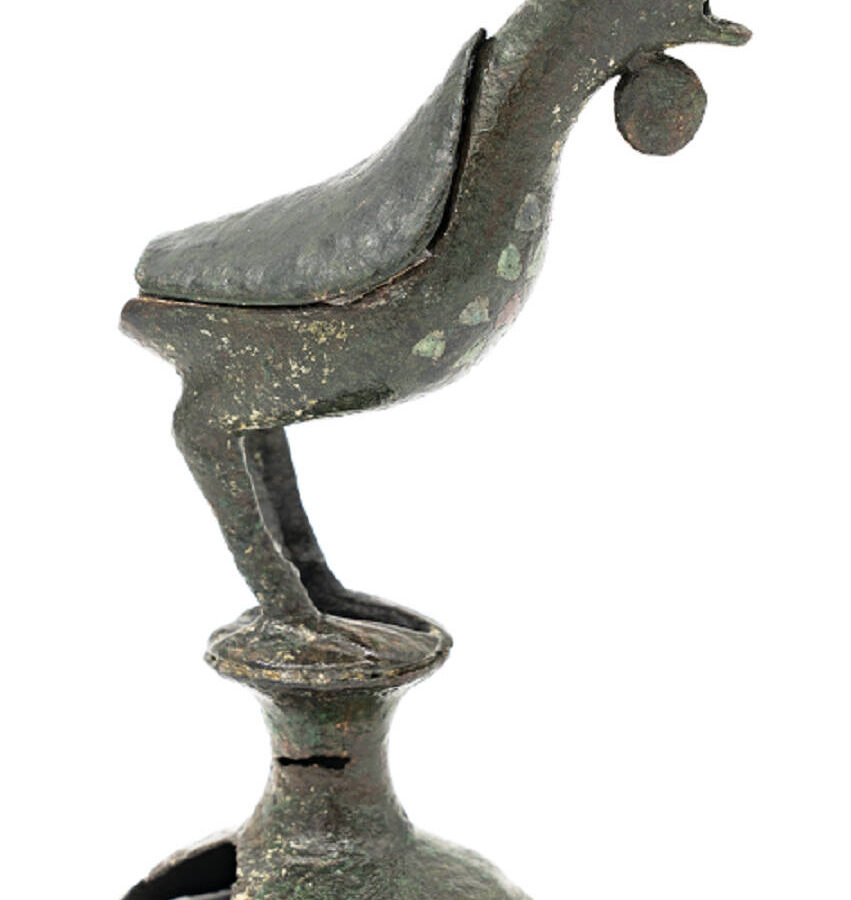
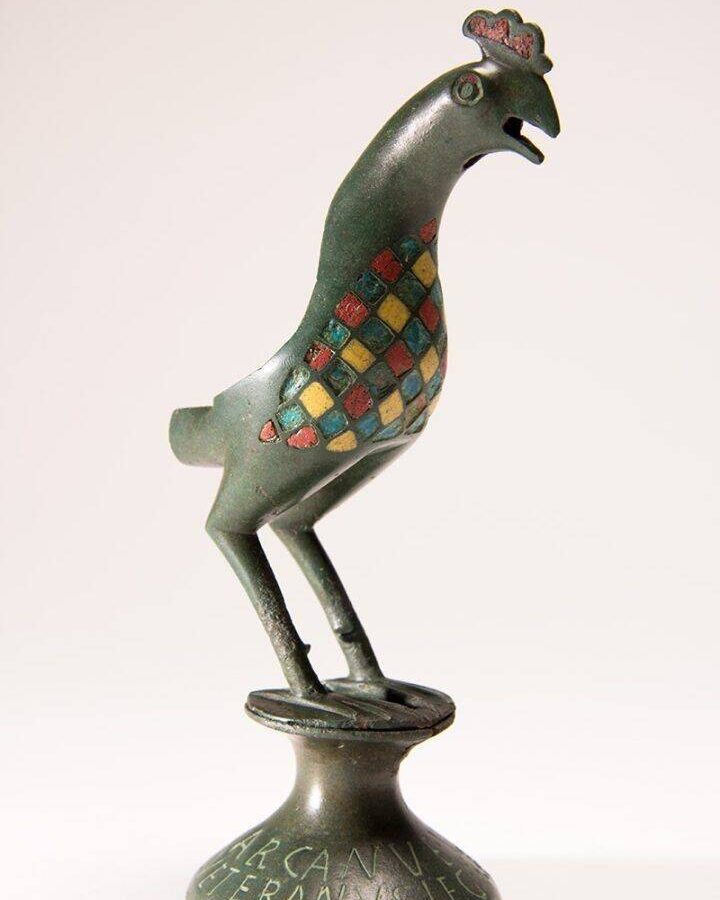
Emergency Excavation
It is 1976. On the industrial estate along the Heirbaan, an emergency excavation is underway. A company wants to expand and is in a hurry. The (amateur) archaeologists and volunteers rush and uncover remains of a Roman sanctuary — likely a simple building with a stone foundation, clay walls, and a roof of tiles.
During the excavation, two finds emerge that clearly indicate the sanctuary was dedicated to the goddess Arcuana: the little bronze rooster and a small metal plate. Arcuana is not among the better-known Roman deities, so archaeologists believe she was a Celtic goddess whose worship continued during Roman times.
Photo: The Little Rooster of Buchten is now housed in the Limburgs Museum in Venlo. It is missing its wattles, tail, and back plate.
“As Promised”
The rooster stands on a separately cast pedestal, inscribed with a Latin text. The inscription states that Ulpius Verinus, a veteran of the Sixth Legion Victrix, donated the figurine to Arcuana “as promised.” The exact nature of the promise is unknown. Perhaps the legionary had prayed to Arcuana during his service in turbulent Britain to reach his retirement safely. Apparently, he did — hence the offering of the figurine he likely brought back from England. The name Arcuana also appears, punctuated with chiselled dots, on a tear-shaped metal plate found at the same site.
Photo: The English rooster is part of the collection of the Corinium Museum in Cirencester.
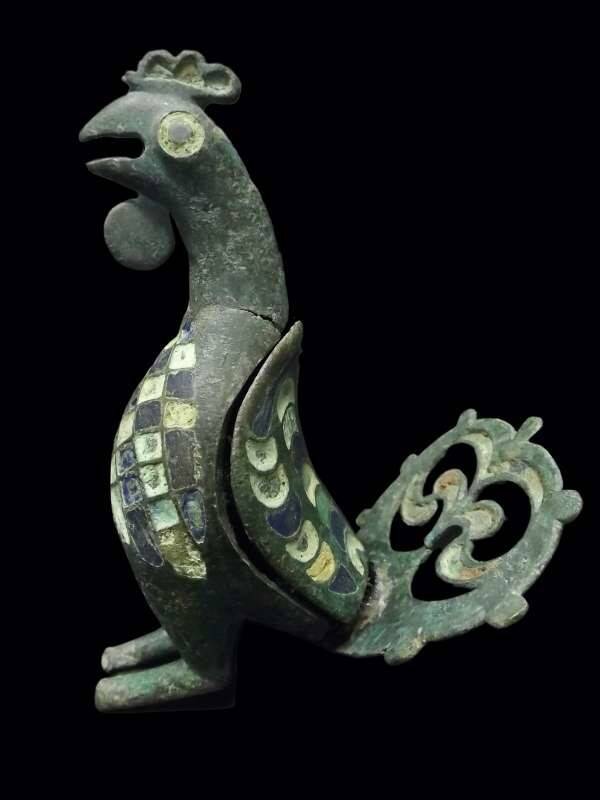
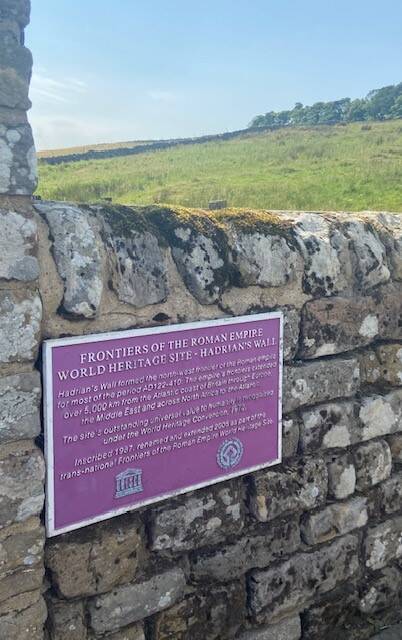
Hadrian’s Wall
The Roman rooster connects to England in two ways. The first is through the Sixth Legion Victrix, to which Ulpius Verinus belonged, stationed in York. The Romans fought fierce battles with native tribes as they tried to extend their empire toward Scotland. These efforts were ultimately abandoned under Emperor Hadrian, leading to the construction of the world-famous Hadrian’s Wall in 122 CE, stretching from Newcastle on the North Sea to Carlisle on the Irish Sea.
The second connection comes from the discovery of an identical figurine — with colored enamel inlays on its chest — found in Cirencester (UK) in 2011. That one was placed in the grave of a child aged two or three.
Photo: Legionary (Marcus?) Ulpius Verinus may have been involved in the construction or defense of Hadrian’s Wall.
The Similarities
The dance between the similarities and differences of the old and the new rooster is fascinating. Observe:
- The modern rooster stands along the A2 motorway.
- The Buchten rooster was found near a crossing of Roman roads: one running north-south along the right bank of the Meuse (essentially the Roman A2), and another running east-west toward Dilsen, crossing the river at Grevenbicht. The modern street name near the find spot? Heirbaan — “military road.”
- The modern rooster stands beside a huge distribution center — commerce.
- The Buchten rooster was found close to a Roman villa rustica — also commerce.
The Differences
- The modern rooster (including base) is 13 meters high.
- The Buchten rooster (including base) is 17.8 centimeters high.
- The modern rooster weighs 1,000 kilograms.
- The Buchten rooster weighs 258 grams.
- The modern rooster has no religious meaning.
- The Roman rooster was associated with Mercury, the god of commerce — though some interpret it as a symbol of the dawn, heralding a new day.
This article is based on a report by archaeologists T. Derks and B. de Fraiture. Want to know more? Read the full report.
